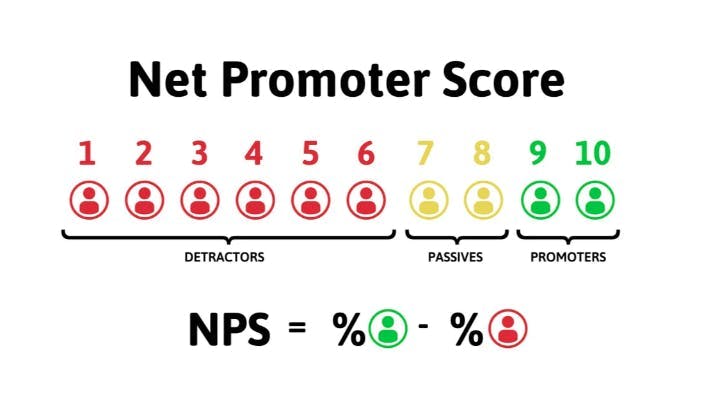One of the objectives of events is to draw attention to your brand. In this article on communication and awareness events, we will present you with the relevant KPIs to allow you to measure their success.
Whether it is a product launch, a new offer presentation, a company celebration, or a customer event, your event has marketing purposes.
There are two types of events:
- Those that celebrate a unique occasion: we seek to bring participants emotionally closer to the brand (or project) and create a bond.
For example: a company anniversary celebration, a groundbreaking ceremony, an inauguration...
- Those with a commercial objective: the aim here is to activate participants, convince them of something and convert them to the company's purpose.
For example: client events, product launches, sales roadshows, press presentations...
To define your KPIs, it is essential to frequently refer to the objectives of your event. This subject should be addressed during the design phase (and not after the event).
Consult with the different stakeholders: sales management, marketing, and communication managers to align the objectives before the event.
This article will give you some ideas of indicators that will allow you to measure the success or failure of your event:
💸 Business indicators
If your event serves a commercial purpose (especially on B2B events), you will need to measure the impact of the event in terms of deals, leads, or partnerships initiated.
For this to work, it may be necessary to synchronize some key information from your CRM (Salesforce, Pipedrive...) and your event management software (Digitevent, of course). You will then be able to measure the impact of your event on your business and have a rough idea of the ROI of your event.
You can base yourself on some indicators such as :
Event revenue = (Number of deals opened x average deal value x deal conversion rate)
Cost per lead collected = Estimated event revenue / Total event cost.
These indicators will allow you to determine an Event Return on Investment (EROI).
Obviously, this calculation is underestimated, because it does not take into account the impact of notoriety and reassurance: media, partnership, and commercial spin-offs in the medium term.
👋 Participation Indicators
Participation (attendance) is an important metric for any event. Proof of the effectiveness of your communication campaigns around it, the attendance rate (on online and physical events) can be calculated as follows:
Attendance rate = (No. of participants present at the event / No. of invitees) x100
You can compare this attendance rate with your objectives or simply with your past events, to evaluate your progress.
This is a calculation that comes close to the infamous "no-show", the guests who validate their participation but do not show up on the day.
No-show rate = (No. of participants who were not checked in among the confirmed / No. of confirmed) x100
To collect this data, use our check-in application for tablets and smartphones during your events, and have real-time visibility (arrival time, reports...) on your guests' arrivals.
The participation rate will give you a measure of the relevance of the theme and the adequacy of the event's promise to the target. This indicator does not in itself define whether the event was a success, but whether it has potential!
😀 Participant satisfaction
- Net Promoter Score:
The Net Promoter Score (or NPS) is an indicator of the overall satisfaction rate of your event.
In a classic way:
Net Promoter Score = (Rate of promoters - Rate of detractors) x100

Note that average (passive) responses are excluded from the NPS and are considered irrelevant.
To calculate the NPS, conduct a post-event survey. You can send an email campaign with a satisfaction survey directly from the Digitevent tool.
If you prefer to collect this information directly at your event, have your guests fill out these questionnaires with tablets (with built-in quizzes) and use an event host and hostess agency.
- Qualitative survey :
Such a survey does not need to be completed by everyone. It is sometimes better to take the time for an in-depth exchange with 10 promoters and 10 detractors than a tedious and difficult to interpret questionnaire.
📣 Awareness indicators
- Press coverage:
The press (print, TV, or web) is one of the main levers to get people talking about you (and your event).
If you invite journalists, make sure you follow up with them on the impact of their visit. It is imperative to prepare a press kit for them.
For all the online press or influencers (blogs...), measure your backlinks to find the press articles that mention your company or the event (via Ahrefs, Google Search Console, SEMrush...).
You can track the source of all articles and mentions of your site by asking influencers or press officers to put UTMs in their links to your sites.
This press coverage increases your notoriety but also your e-reputation and your SEO score.
To measure the impact, it can be wise to use conversion links specific to the event (e.g.: specific promo code, or specific destination URL).
- The number of followers on social networks:
Your social networks are probably already one of your means of communication with your various audiences.
Your number of followers is one of the obvious indicators of the performance of your event on the notoriety of your company.
Subscriber growth = ((Number of subscribers 1 week after the event - Number of subscribers before 1 month before the event) / Number of subscribers 1 month before the event) x100
You can also track tags and shares, also views of your social posts - To maximize these results, create ways to engage the audience during the event, like hashtags specific to your event. This will allow you to go beyond simply calculating the delta of followers.
- Traffic to your website:
When a company's name is known, a potential customer's first instinct is to search on Google.
Obviously, if you are a B2C brand organizing an event with a limited reach, this indicator may not be relevant (as the event may be marginal in your overall volume).
If you see your Google Analytics traffic explode during your event, you've probably increased your brand awareness!
Increase in web traffic = (Change in traffic after event / before event) x100
Conclusion
The interest of measuring all these KPIs is also to have reports and data, to improve on the next editions, and to have feedback to influence your event strategy. Digitevent provides a real-time dashboard of your event, which allows you to have a data-driven approach to your event strategy.
Be creative, keep in mind that this article contains a non-exhaustive list of metrics. The key is to adapt your dashboards to your business. Don't be a perfectionist; "the best" is the enemy of "the good." The worst would be to forget to measure performance, finding the perfect indicator can take time :)




